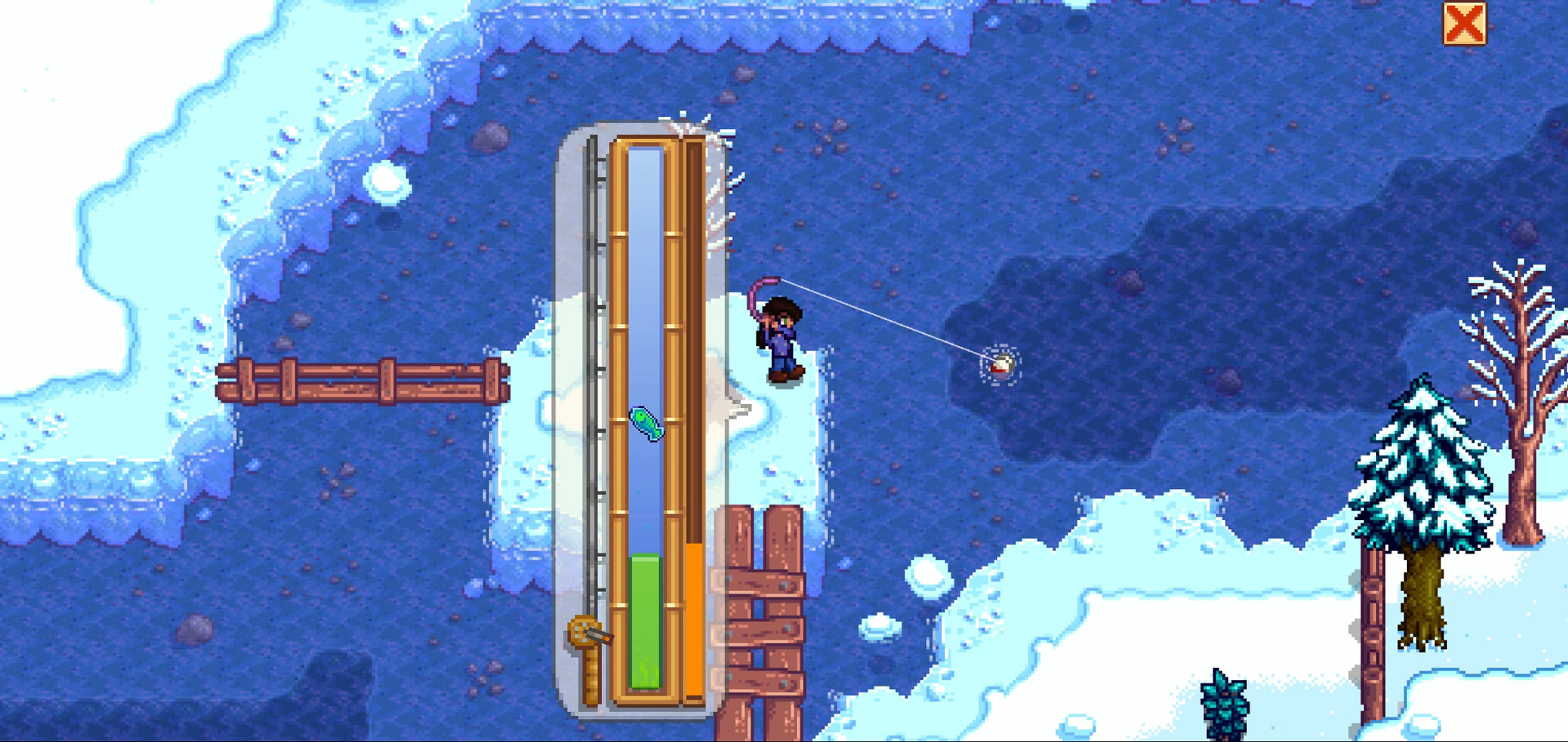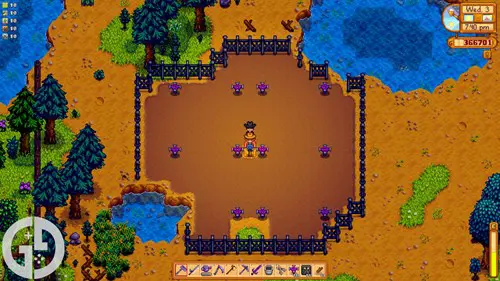The Ultimate Stardew Valley Positioning Guide - Master Your Farm for Peak Efficiency and Profit
Welcome to The Ultimate Stardew Valley Positioning Guide, your comprehensive resource for mastering farm layout, strategic building placements, and resource management in Stardew Valley. Positioning your farm elements thoughtfully can dramatically enhance your productivity, crop yields, and overall enjoyment of the game. Whether you're a newcomer or an experienced farmer looking to fine-tune your design, this guide provides detailed insights and strategies to optimize every inch of your farm for success.
Mastering Stardew Valley: An Introduction to Strategic Positioning

Getting started with effective positioning in Stardew Valley isn't just about aesthetics—it's about creating a sustainable, efficient farm that maximizes output while minimizing wasted time and energy. The foundation of a successful farm lies in understanding how each element interacts with others: crops, animals, buildings, and your personal pathways. A well-planned layout reduces travel time, eases daily routines, and allows for easy expansion.
Strategic positioning also involves factoring in the natural landscape, access to water sources, and proximity to important town resources like shops and the mine. By carefully considering these factors early on, players can avoid costly reconfigurations later and foster a farm that reflects both practicality and personal style. This initial investment in thoughtful placement pays dividends as your farm grows, giving you more time to focus on optimizing crops, animals, and artisan businesses.
Understanding Stardew Valley's Map Layout for Optimal Farm Placement

Stardew Valley's map layout features diverse terrains—plains, hills, rivers, and forests—that influence farm planning. Recognizing these variations allows you to use the landscape to your advantage, such as placing crops on flat land for easy irrigation or setting up animal coops on higher ground to avoid flooding. Pay attention to the locations of the river for access to water sources and the proximity of forested areas for gathering resources.
Creating a mental or physical map of your farm area helps in visualizing efficient zones for different activities. Placing your crop fields near your farmhouse minimizes daily travel, while positioning animal enclosures close to feed storage simplifies daily maintenance. Strategic placement minimizes unnecessary foot traffic and leverages natural landscape features to reduce the need for artificial enhancements, thus making your farm both functional and immersive.
Maximizing Efficiency: Positioning Buildings for Peak Productivity
The placement of buildings — Save your time and energy by designing a layout where everything is within easy reach. For example, situating your barn and coop close to the pasture allows quick access for daily animal care and also reduces wear-and-tear on your farm paths. Building near each other creates clusters that can be easily managed and expanded upon without disrupting the entire farm setup.
Furthermore, considering the direction the buildings face can enhance functionality. Penning animals on the sunny side fosters healthier animals and better product quality, while placing storage silos and processing structures like kegs or preserves near your crop fields streamlines production. Smart positioning reduces clutter, minimizes lag during gameplay, and sets an ideal foundation for future growth.
Strategic Crop Placement: Optimizing Yield and Minimizing Travel Time
Efficient crop placement is fundamental for maximizing harvests while reducing daily routine stress. Grouping similar crops together not only enhances aesthetics but also simplifies watering and harvesting routines. For example, planting seasonal crops in contiguous blocks allows for swift watering, easier fertilization, and straightforward harvesting.
Utilizing automation tools like sprinklers achieved through precise placement is essential for large-scale farming success. Arranging sprinkler radius coverage to eliminate manual watering saves countless hours during peak growing seasons. Think about planting high-value crops centrally near storage, processing, or transportation zones to cut down on travel time and increase profit margins. The goal is a harmonious balance between crop zones, irrigation, and access routes.
Animal Husbandry: Designing Efficient and Accessible Coop and Barn Layouts
Housing animals efficiently involves designing layouts that promote accessibility and growth. Positioning coops and barns on flat, accessible terrain near feed storage and water sources minimizes daily chores. Grouping different types of animals in a logical sequence allows you to customize feeding and cleaning routines, ultimately saving time.
In addition, creating clear pathways for tending to animals, collecting products, and performing maintenance is crucial. Placement of access points and doors can significantly streamline your daily routine. Properly designed enclosures also facilitate easier expansion, helping you add more animals or upgrade structures without dismantling large portions of your farm. Efficient layouts make animal husbandry less of a chore and more a rewarding part of farm management.
The Art of Decor: Functionality and Aesthetics in Farm Design
While aesthetics are often overlooked, integrating beauty and function in your farm design enhances your immersive experience. Thoughtful decor, such as decorative fences, pathways, and plant varieties, can delineate zones—separating crop areas from animal enclosures or leisure spaces—making the farm feel organized and inviting.
Functional aesthetics involve combining visual appeal with practicality. For example, planting flowers around high-traffic areas attracts pollinators, boosting crop yields, while decorative lighting ensures pathways are visible at night. Experimenting with different styles can boost morale and motivation, encouraging you to maintain your farm more diligently. Ultimately, a farm that balances beauty and utility creates a personalized sanctuary as productive as it is picturesque.
Positioning for Profit: Prioritizing High-Value Crops and Artisan Goods
Maximizing profits through strategic placement centers on cultivating high-value crops and artisan products in accessible zones that facilitate processing and shipping. For instance, planting lucrative crops like strawberries or cranberries near your workshop or storage encourages quick turnaround times from harvest to sale.
Positioning is also critical when setting up your artisan machinery—placing kegs, preserves jars, and cheese presses near processing areas minimizes the movement of bulky items. Likewise, dedicating specific zones for crops destined for high-margin products streamlines workflow. Thoughtfully allocating land and resources ensures consistent income flow, especially as seasons shift and market demands evolve. Accentuating farm layout with profit in mind is a vital component of long-term success.
Navigating Stardew Valley's Towns: Positioning for Quick Access to Resources
The town of Stardew Valley is the hub for buying supplies, visiting the museum, and socializing with villagers. Positioning your farm with close proximity to the town reduces travel time, enabling you to gather supplies, complete quests, and socialize efficiently. When planning your farm, consider orienting your main pathways towards the town entrance for quick and convenient access.
Moreover, setting up shortcuts or alternate routes can dramatically improve your daily routine. Developing a peri-urban farm that balances proximity to the town for quick resource access with ample farmland for crops and animals offers a strategic advantage. Being close to these daily hubs not only contributes to your farm’s efficiency but also enhances your social opportunities within the game.
Adapting Your Farm to Seasons: Adjusting Positioning for Year-Round Success
Seasons in Stardew Valley influence crop viability, animal behavior, and aesthetic appeal. To adapt, consider flexible placement and infrastructure that accommodate seasonal changes. For example, relocating some crops into greenhouses lets you grow year-round, while positioning seasonal crops on raised beds or movable planters allows for easy repositioning.
Additionally, seasonal decorations and layouts can be switched to celebrate festivities or optimize sunlight, depending on your farm’s orientation. Building structures like cold frames or aquaponics systems can extend your farming seasons, and designing your farm with modular zones allows for easy seasonal adjustments. Such adaptive positioning strategies ensure consistent productivity regardless of changing weather patterns.
Advanced Positioning Techniques: Streamlining Your Stardew Valley Experience
For seasoned players, advanced positioning involves automation and precision layout planning. Techniques like installing sprinklers in calculated patterns, designing multi-floor buildings for different crop types, and creating dedicated pathways for rapid movement can dramatically streamline operations. Using tools like the crafter's bench to pre-assemble layouts or map plotting tools can help visualize complex systems before implementation.
Moreover, some players employ grid-based planning to optimize space usage, similar to urban planning, ensuring each component interacts seamlessly with others. Incorporating these advanced strategies—through thoughtful zone designation and technology—elevates your Stardew Valley experience from basic farming to a well-oiled, profitable farm management system. These techniques demand foresight and experimentation but can yield the most rewarding results for dedicated farmers.
Conclusion
Achieving mastery in Stardew Valley is deeply tied to effective positioning and farm layout strategies that balance efficiency, aesthetics, and profitability. From understanding the map layout to designing sectors optimized for crop yields, animal husbandry, and artisan production, each decision impacts your long-term success. Thoughtful placement of buildings, crops, animals, and pathways reduces unnecessary travel, enhances workflow, and creates a farm that is both beautiful and practical. Continuously adapting your setup for seasonal changes and implementing advanced techniques ensures your farm remains resilient and highly productive. By applying the principles detailed in this comprehensive guide, you'll unlock the full potential of your farm, turning your Stardew Valley experience into a fulfilling and well-organized adventure.